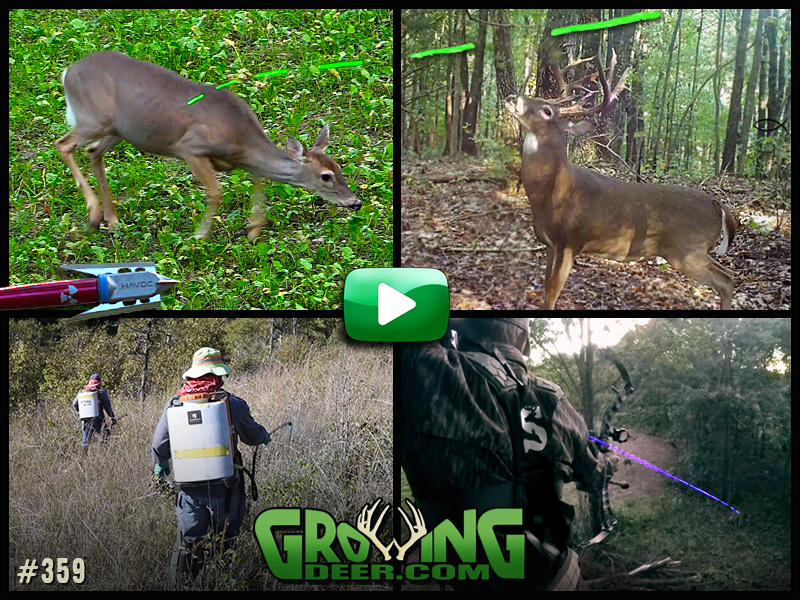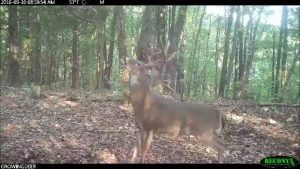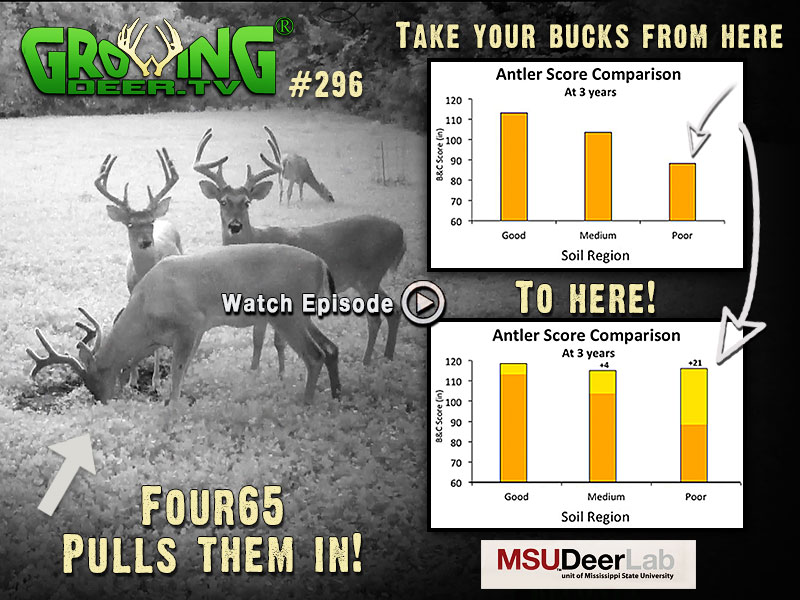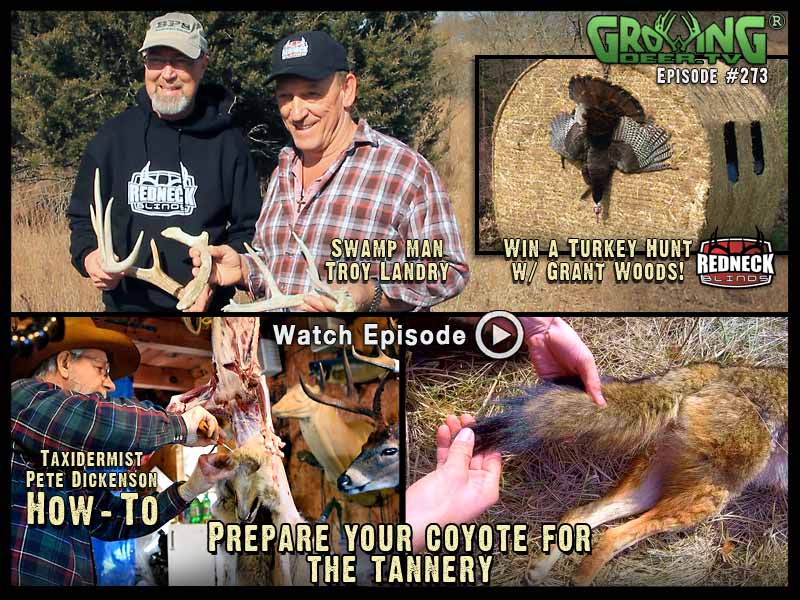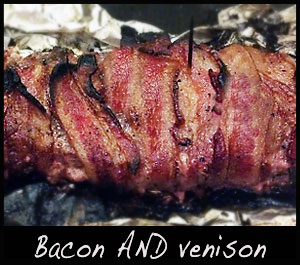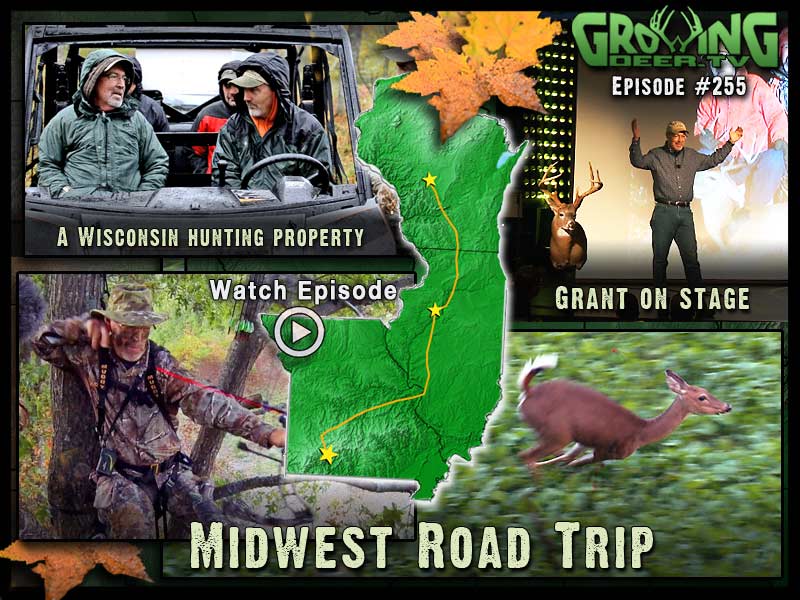Category: Deer Management
It’s Never Too Early or Too Late – Episode #359
New Video
It’s never too early to be working on doe management. Watch to see the latest bow hunting success from the Summit treestands. Plus, the habitat management doesn’t stop because it’s deer season. See how we are boosting our bedding areas for better whitetail habitat.
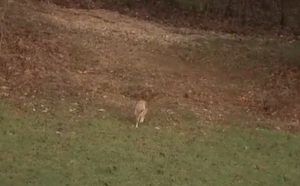 Short Clip:
Short Clip:
What do you do when a coyote shows up? Watch how Grant handles this situation while bow hunting.
New Weekly Video Blog: New Developments!
There are new developments in Handy’s movements. We may soon make our move to intercept this mature buck. Find out more here!
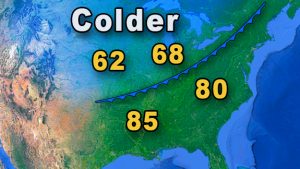 Tip of the Week:
Tip of the Week:
Weather Watch! Closely watch for passing cold fronts. This is a great time to be in the woods!
End Of Season Inventory
Bow season has now been closed here in Missouri for a week. Adam was able to harvest a doe on the last evening, ending the season on a high note. Although it’s only been one week without deer season the preparations for next year have already begun.
Our Reconyx cameras stay out all year long. We are now in the process of taking an inventory of what bucks survived the hunting season and in what condition they are entering winter stress period. This information is valuable for multiple reasons. First and foremost we want to be able to monitor their movements and identify their core areas. This is especially true for the 3.5 year old bucks who will make the hit list for the upcoming season. We didn’t spend our time this fall trying to understand those deer and their patterns of movement. However, now as we prepare for next season we will we use this information to go back and look at trends in movement from those individual bucks that were recorded this past fall. This prepares us for the following seasons as deer are creatures of habit. A buck may move under similar conditions within the same areas from year after year. If we have this information already recorded and analyzed then we can confidently go into our Summit stands the following season.
In addition to keeping our cameras running all year long, we also keep our Trophy Rock Four65 locations supplied throughout the year. Deer need a supply of mineral year round especially during the winter stress period. Setting our Reconyx cameras on these locations allows us to gather the information we are looking for at this time of the year.
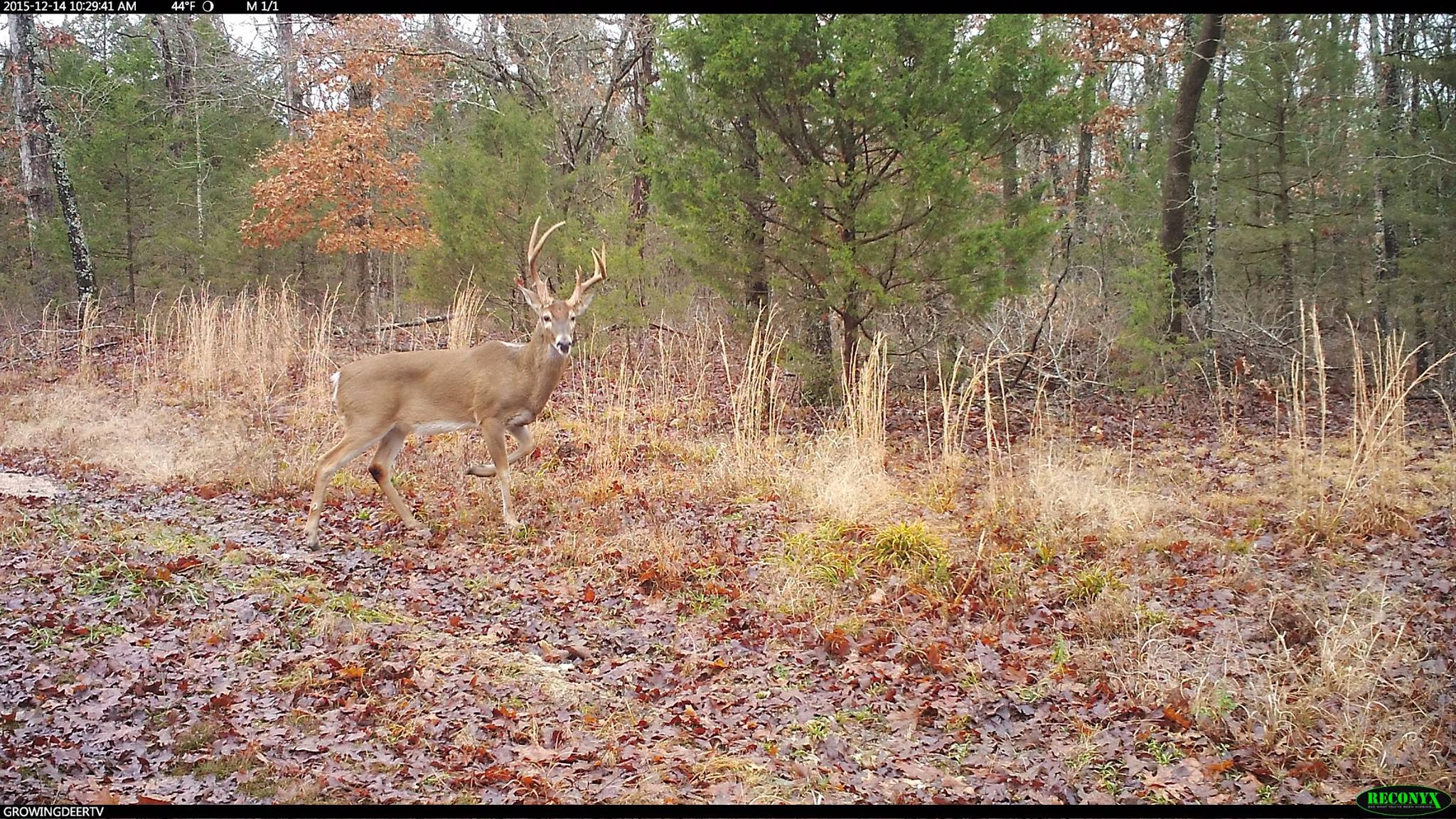
We are watching and learning this buck’s movements.
Although we cannot chase whitetails during the next few months we are going to actively prepare ourselves for the next opportunity. Make sure you keep your cameras running through the winter. The information gathered from the pictures will allow you to learn more about each individual deer. That information serves a greater purpose in the coming months!
Growing Deer together,
Matt Dye
Deer Management 101 – Dead Deer Don’t Grow
Deer season is almost upon us! One thing I enjoy most while anticipating deer season is checking the Reconyx cameras and seeing what bucks are using the property. Doing this year after year, you begin to recognize bucks from prior years and observe their antler growth or decline. A buck we call, “Handy” has definitely been an eye catcher this year!
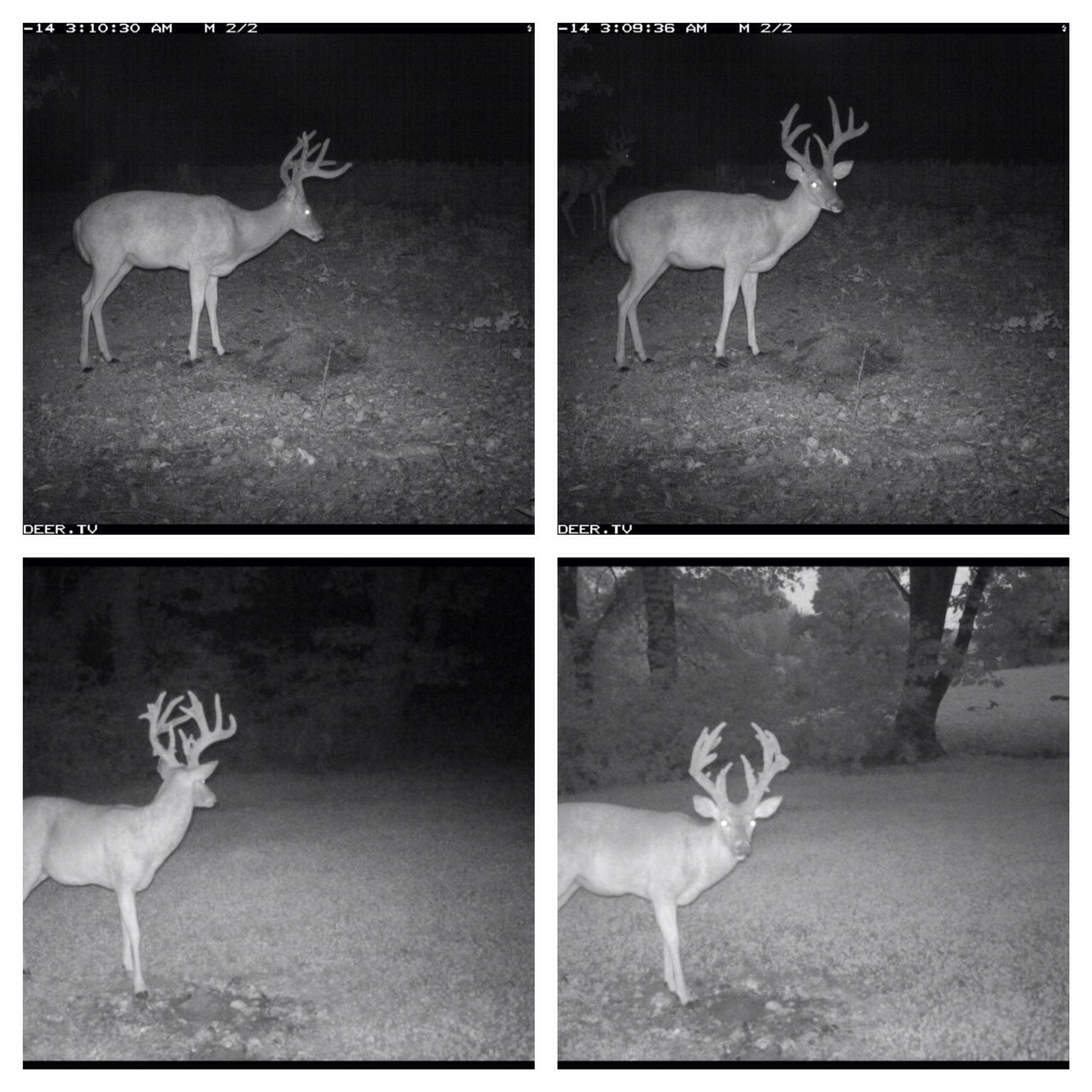
The difference a year makes! (Top) Handy as a 3.5 year old. (Bottom) Handy this year as a 4.5 year old.
Although we can‘t be absolutely certain it’s the same buck we feel very confident it is. Last year he showed up as a main frame 8 point with a couple of small sticker points and we estimated this buck to be 3.5 years old, which means he would get a pass if anyone laid eyes on him while hunting. Handy was very active last fall on our Reconyx cameras. I even had a nice encounter with him during the Missouri rifle season, but rules are rules, so I let him walk.
Fast Forward to this Summer –
July of 2015 was upon us and we were looking through the Reconyx cards to see who we recognized from last year. We were ecstatic when we found a buck that resembled Handy from the previous year. There are several reasons why we believe it’s the same buck. The sticker points are back on the same tines only bigger, the buck is living in the same area he was living last summer and overall the antler symmetry is very similar.
After seeing the amount of growth that Handy has put on in one year, I’m so happy I gave him a pass last fall. It’s not every day we are blessed enough to pass a buck, only to watch him turn into something significantly bigger. Hopefully we’ll get another look at him the coming weeks!
Daydreaming of whitetails,
Adam
Manipulating Deer Travel Patterns
Deer often take the path of least resistance. They may seem to meander aimlessly when they are browsing, feeding on acorns, etc. However, when they travel from feeding to bedding areas they almost always take the path of least resistance that they don’t associate with danger.
In some areas such as farm country where cover is limited it’s easy to find existing deer trails. Hunters in these areas often place stands along these trails.
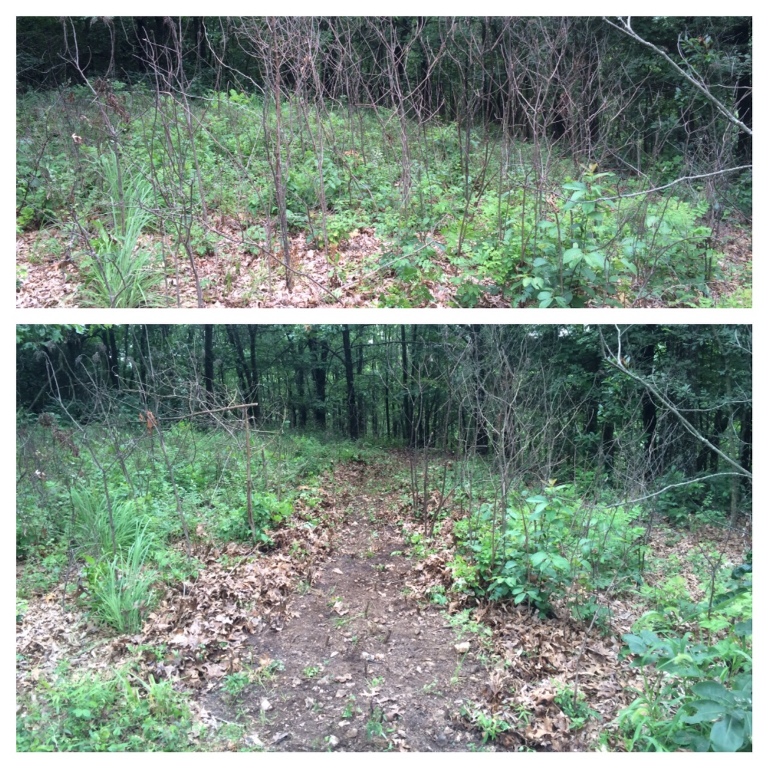
A before and after look at a path made next to one of the treestands.
In areas where the landscape is primarily covered by timber deer tend to walk in general areas because cover is often similar over large areas. In timber stands that are about the same age there isn’t an obvious path of least resistance.
This scenario can work in a hunter’s favor because it is easy to create a path of least resistance where it’s an advantage to hunters! By using a handsaw, weed eater, backpack blower, and/or a garden rake it’s easy to create a path of least resistance! I’m amazed at how fast deer will adapt to trails created using this simple technique.
Keep in mind deer aren’t going to travel hundreds of yards simply to use such a trail. However, if deer pass within 100 yards or so of an area (but not on a specific trail) they will often adapt and bottleneck down to using a path created as described above.
If you are frustrated because deer seem to wander in general areas rather than use a trail try creating a path of least resistance. It’s a great technique that can help add venison to your freezer!
Nicolas Halchin
Increasing Antler Size – Episode #296
If deer tend to produce smaller antlers and body sizes where you hunt, Ph.D. student, Eric. S. Michel has some great news for you! Eric presents his research and results and I encourage you to share them with other hunters! Plus, we have some cool buck footage from one of our Reconyx UltraFire cameras!
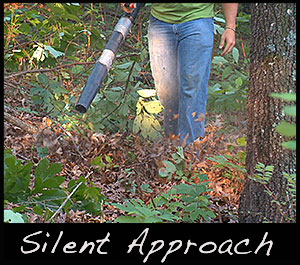 Tip of the Week:
Tip of the Week:
Make noise now, not later! Time to make your entry points deadly silent. Use gas powered blowers or rakes to clear important paths.
Managing Bucks
Deer season is fast approaching and most hunters are checking cameras and making a list of mature deer to hunt this fall. However, every year I hear someone complaining that one or more bucks on their property has a funny looking set of antlers and needs to be stopped from reproducing.
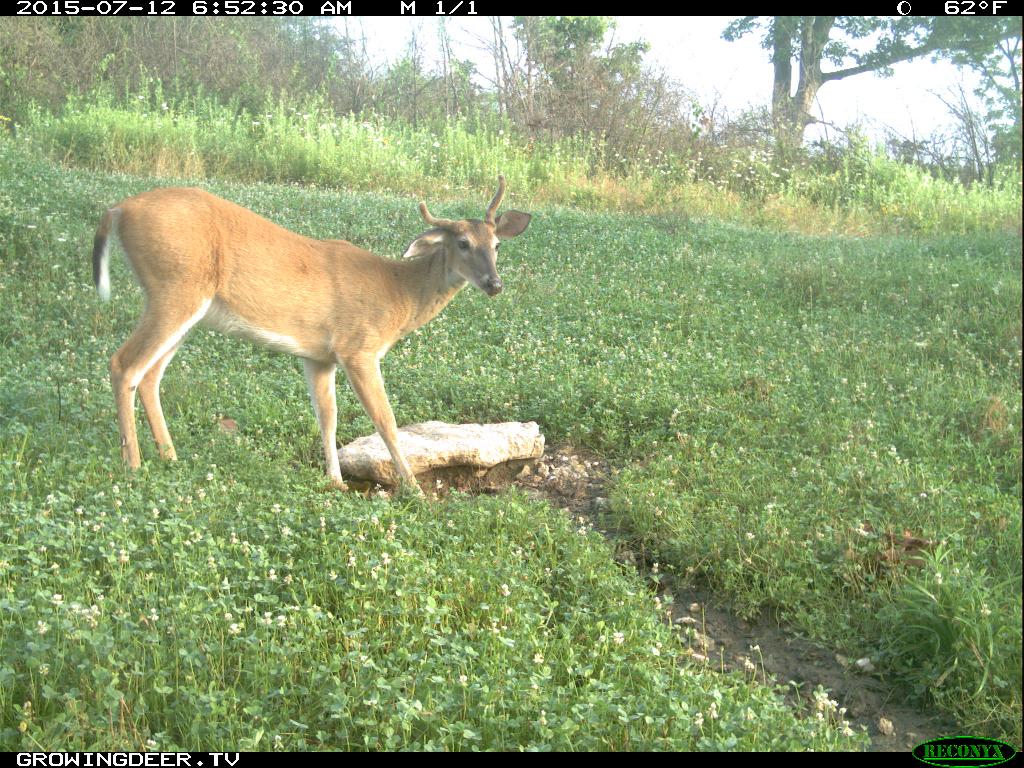
We passed this buck as a yearling and he developed into a nice buck as a 3 year old!
Some hunters label bucks with less than desirable antlers as culls or management deer that need to be removed from the gene pool. Many times these deer are simply young, immature, and have some unique and funky characteristics to their rack. While it may seem like killing a 1.5 year old buck with a freaky frame will result in improving the herd’s gene pool this is rarely, if ever, true. The reality is that removing such a buck from a wild, free-ranging herd is probably like dropping a pebble into an ocean and likely removing a buck that could’ve turned into a dandy.
It’s easy to forget that does make a substantial contribution to the herd’s genetic make-up. Currently, without a known pedigree there’s no way to know which doe and buck matings produced the largest bucks where you hunt. In fact, numerous studies have shown that trying to manage the genetics of a free-ranging deer population has little to no impact on antler quality.
If you wish to help the herd then simply give that “cull” buck good groceries, quality cover, and a pass until he’s mature. I’d be willing to bet that in a few years that weird looking yearling will be a desirable trophy and the memories made watching him grow will be far more rewarding than removing him this fall.
Sowing seeds for the future,
Kevin Shettle
Antler Growth And The Importance Of Minerals
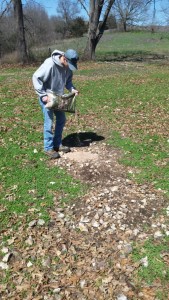
Intern, Clay O’Dell, is placing Trophy Rock’s Four65 in front of a Reconyx camera.
It doesn’t seem possible, but spring has arrived and the yearly cycle of antler growth is continuing. Not long ago it seems like we were chasing whitetails during the winter months, and now we’re discussing velvet growing. Regardless of how quickly it got here, it’s here, and we don’t want to miss this easy opportunity to help benefit our deer herd. One of the quickest and easiest ways to help improve the health of the deer is by providing easy access to minerals.
During this time of year, bucks are preparing for new antler growth while they are still recovering from this past winter. Most of our does are pregnant and will be giving birth over the next couple of months. One important substance that both bucks and does need is mineral, and you can provide this by using Trophy Rocks or their crushed version, Four65. We generally place a Trophy Rock on every 80 to 100 acres on our property ensuring that every deer has access to a mineral supply.
One of the greatest things about using Trophy Rock or Four65 this time of year is deer will be actively using the mineral making this a great place for a trail camera! We first place our Trophy Rocks in high traffic areas where deer were already active. Once we establish the site, we won’t move the rocks, making it a great location for a trail camera year after year!
We love to check our Reconyx cameras during the spring! We’re always looking for those strutting turkeys but also checking up on our deer making sure they’re healthy and happy. If you’re looking for ways to improve the health of your deer herd don’t overlook this easy step.
Daydreaming of whitetails,
Adam
Troy Landry Talks Deer – Episode #273
Troy Landry is a famous alligator hunter from the hit show Swamp People. This week Grant tours and studies Troy’s deer hunting property. Grant’s goal is to help Troy maximize his deer hunting opportunities.
Do it yourself! Coyote pelts make great decorations and gifts! Want to prepare your own coyote for the tannery? We’ll show you how with taxidermist Pete Dickenson.
Hungry? Does bacon wrapped backstrap sound good?
Enjoy your hard earned backstraps with this recipe:
Hunting Free Ranging Whitetails: Sharing Isn’t Always Easy
Almost every hunter that steps into the woods during the fall has one buck that they dream about, lose sleep over, strategize over and fantasize over. This is the story about that buck and the day it all ended.
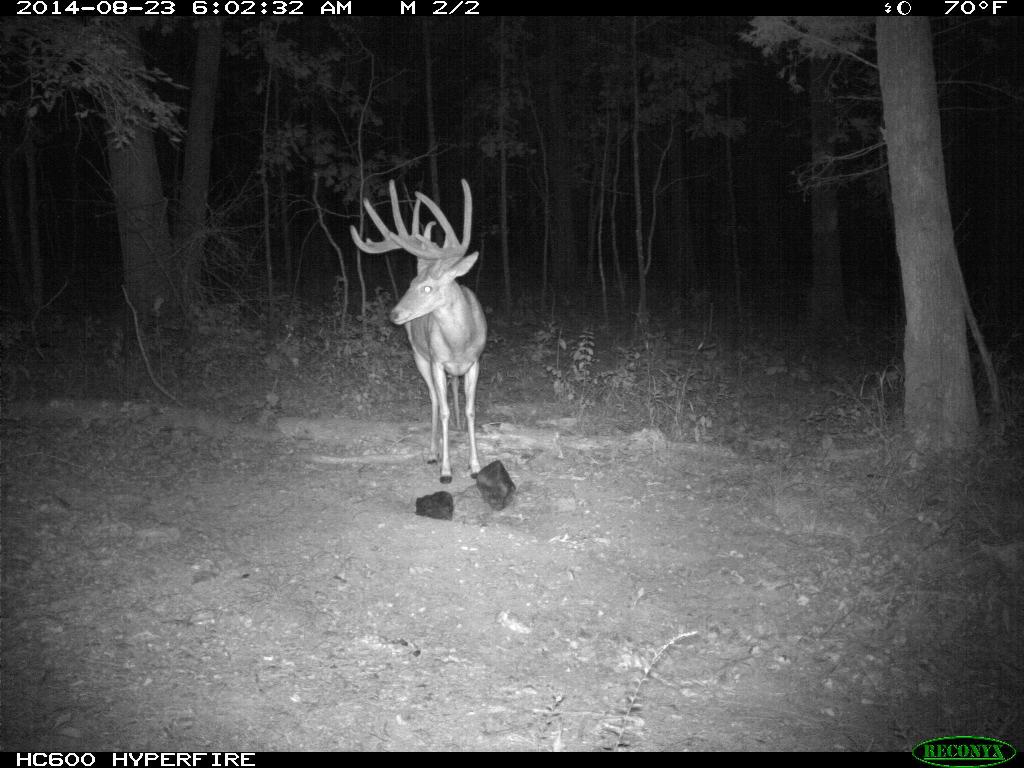
Royal George was a frequent nighttime visitor to our Trophy Rock sites.
George Alexander, also called Royal George, showed up on our Reconyx cameras last summer and immediately caught our attention. At that time he was unknown and unnamed. Hoping he would make his living on the farm, we knew he would be our prized buck. About that time the news media was obsessed with a baby in England named George Alexander. How fitting could this name be? While a majority of the world was talking about George Alexander of England, Grant and I were obsessed with George Alexander of The Proving Grounds. After looking through the Reconyx images we decided he was immature and would receive a pass for the 2013-2014 hunting season.
Fast forward to July 1st. We laid our eyes on George for the first time in 2014. One word – WOW! Here in southern Missouri where The Proving Grounds is located, it’s tough for a buck to reach over 160 inches. It certainly happens, but when a buck reaches that size he is the talk of the neighborhood. Grant and I felt that George was 4.5 years old going into this hunting season, so he was the top buck on our hit list. Knowing how hard it is to hunt nocturnal bucks, and sensing our chance for success would be slim to none, Grant and I didn’t hunt George very much. We checked our cameras constantly throughout the fall, hoping for daylight movement of George, and it never happened. As the rut started to come into full swing we hoped a hot doe would lure him out in daylight. Through all of this, there was also concern that he might venture off the property. The fourth night of Missouri firearm season Grant received news.
Grant gave me a call and told me to check my email. I scanned through pictures sent by the neighboring landowner and all our dreams of harvesting George were erased. Our neighbor had shot Royal George late that evening right under his tree. I was immediately upset and got very little sleep that night thinking about that great buck. This is an ending that every hunter has or will experience. It’s unpleasant, but it’s part of managing free ranging whitetails. Sure, it would have been great to see George at The Proving Grounds, but we’re happy for our neighbor and what he was able to accomplish. At the end of the day we need to be thankful for what we got out of the pursuit. George wasn’t poached, or hit by a vehicle, he was harvested by a landowner who was perched in a tree enjoying the evening just like you and I.
As the book closes on this great whitetail, I’m sure another buck like George will come along soon. As deer managers, we will continue to let young deer walk and improve the habitat to grow bigger deer. Congratulations to our neighbor on harvesting such an incredible whitetail!
Daydreaming of Whitetails,
Adam
Venison On The Ground – Episode #255
It’s almost impossible to pattern deer with acorns everywhere. When Grant discovers a pattern in a food plot, he and Adam go for it! Then Grant takes the stage at the Northwoods Church in central Illinois. It’s mature bucks, good food and the good Word. Continuing north on this 1,400 mile road trip Grant explores a central Wisconsin hunting property. Meanwhile, back in Missouri, Adam Brooke bow hunts in a stand of white oaks. It’s a self-filmed success story.
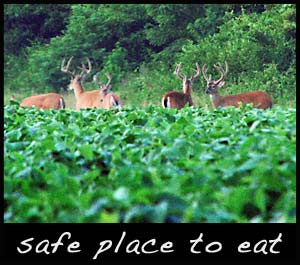 Tip of the Week: World’s Best Deer Food?
Tip of the Week: World’s Best Deer Food?
It’s the best quality forage they don’t associate with danger. Hunt your food plots with care. Mature deer will pattern you.



